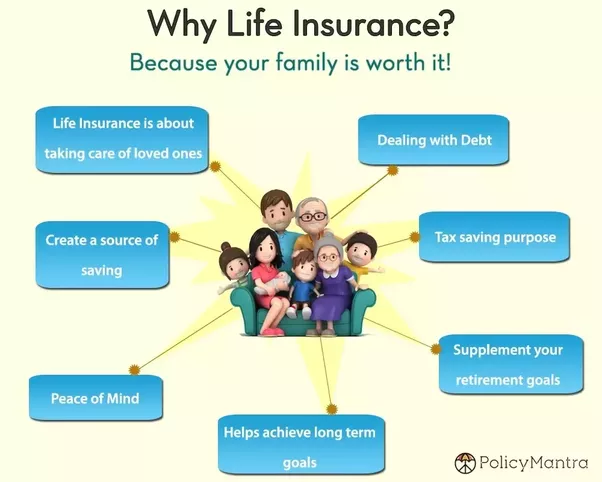The 6-Second Trick For Pacific Prime
The 6-Second Trick For Pacific Prime
Blog Article
The Of Pacific Prime
Table of ContentsThe Definitive Guide for Pacific PrimeTop Guidelines Of Pacific PrimeUnknown Facts About Pacific PrimeUnknown Facts About Pacific Prime
In most states, the insurance firm is called for to send you a copy of the adjustments to your policy. It is important that you read Endorsements or Cyclists so you understand exactly how your plan has actually transformed and if the plan is still ample to meet your demands. To acquire a copy of your insurance plan, please contact your insurance coverage agent or business.
The Institute of Medicine (IOM) Committee on the Consequences of Uninsurance launches an extensive examination of proof that addresses the relevance of medical insurance coverage with the publication of this record. Insurance coverage Issues is the very first in a collection of six reports that will certainly be released over the following two years documenting the truth and consequences of having an approximated 40 million individuals in the United States without medical insurance protection.

Some Known Details About Pacific Prime
The goal of this series of researches is to redouble policy interest on a historical problem. Complying with the lengthiest economic growth in American background, in 1999, an approximated one out of every 6 Americans32 million grownups under the age of 65 and even more than 10 million childrenremains uninsured (Mills, 2000).

Ten percent of the population represent 70 percent of healthcare expenditures, a correlation that has actually remained continuous over the previous 3 decades (Berk and Monheit, 2001) - global health insurance. Therefore wellness insurance continues to serve the feature of spreading out risk also as it significantly funds routine treatment. From the viewpoint of health care service providers, insurance policy lugged by their individuals aids secure an earnings stream, and areas gain from financially feasible and secure healthcare specialists and institutions
Government offers health insurance to populations whom the private market might not offer successfully, such as impaired and senior individuals, and populations whose accessibility to health treatment is socially valued, such as kids and pregnant women. The best ends of medical insurance coverage for the specific and neighborhoods, consisting of work environment areas of staff members and employers, are boosted wellness results and high quality of life.
The Pacific Prime Ideas
Employees rate medical insurance initially by far in relevance among all the benefits offered in the office (Salisbury, 2001). Although there have actually been substantial investments of individual and public funds to supply medical insurance, many individuals still have no coverage. In spite of comprehensive reporting of study findings and healthcare study results, the general public continues to be confused and mistaken concerning Americans without medical insurance and the ramifications of doing not have coverage.

Without doubt, the complexity of American wellness treatment financing systems and the wide range of sources of information contribute to the public's complication and suspicion regarding wellness insurance policy stats and their interpretation. This report and those that will certainly comply with goal to boil down and present in easily easy to understand terms the considerable research that bears upon inquiries of health and wellness insurance coverage and its significance.
Fifty-seven percent of Americans questioned in 1999 thought that those without medical insurance are "able to get the treatment they require from doctors and health centers" (Blendon et al., 1999, p. 207). In 1993, when national interest was concentrated on the troubles of the without insurance and on pending wellness treatment legislation, simply 43 percent of those surveyed held this idea (Blendon et al., 1999).

They likewise receive fewer precautionary services and are much less most likely to have routine care for chronic problems such as high blood pressure and diabetic issues. Persistent diseases can lead to pricey and disabling difficulties if they are not well handled (Lurie et al., 1984; Lurie et al., 1986; Ayanian et al., 2000). One national study asked greater than 3,400 adults about 15 very major or morbid problems.
The Pacific Prime Statements
Extra evidence exists later in this phase in the discussion of insurance coverage and access to healthcare. https://pubhtml5.com/homepage/pspip/. Individuals without health and wellness insurance are young and healthy and balanced and choose to do without protection. Practically fifty percent (43 percent) of those evaluated in 2000 thought that individuals without medical insurance are much more most likely to have health issue than people with insurance
Voters and policy makers in focus group discussions characterize those without insurance policy as youngsters who have the opportunity to be covered and feel they do not need it (Porter Novelli, 2001). Contrasted to those with at the very least some private insurance coverage, the without insurance are much less likely to report being in superb or excellent wellness (Company for Medical Care Research Study and High Quality, 2001).
SOURCE: Facility for Cost and Funding Researches, Firm for Medical Care Study and Top quality, based on MEPS data. Young person between 19 and 34 are even more most likely to lack health and wellness insurance than any type of various other age. This is mainly due to the fact that they are much less commonly qualified for employment-based insurance because of the nature of their work or their short tenure in it.
The perception that people without insurance coverage have better-than-average wellness complies with from perplexing the reasonably young age account of the uninsured with the better health, on average, of more youthful persons. This obscures the web link between health condition and wellness insurance policy. For those without accessibility see post to office health and wellness insurance, poor wellness is a possible barrier to acquiring nongroup coverage due to the fact that such protection may be extremely priced, leave out preexisting problems, or be just inaccessible.
Report this page